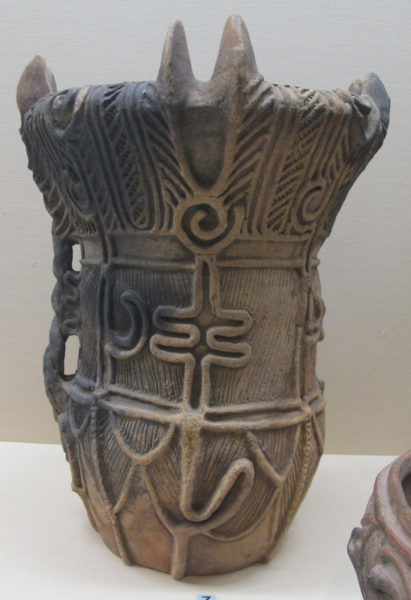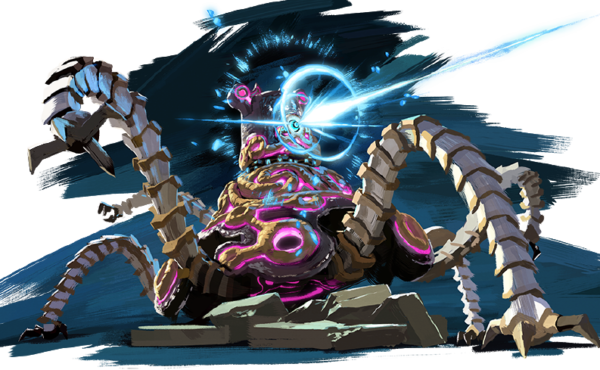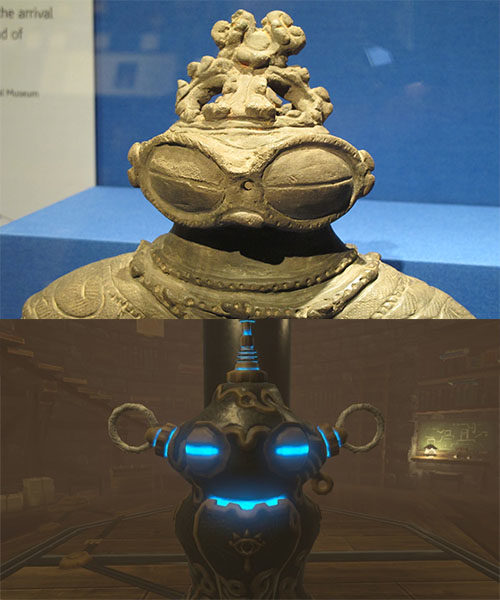The Kingdom of Hyrule in Nintendo’s The Legend of Zelda: Breath of the Wild is a vast, fantastical world of mythical creatures, and the backdrop for one of 2017’s best adventures. But the scope of Hyrule contains more than fantasy. When journeying across its boundless fields and scaling its lofty peaks, you are also entering some real history.
For all their fairy-tale presentation, the timeworn fanes, nimble guardians and pastoral towns take inspiration from Japan’s Jōmon period. Dated between 14,000-300 BCE, this period of Japanese history is remarkable for its tools, jewellery and hunter-gatherer culture.
But there is much about the period that remains unknown, which means that those who take it as their inspiration are also leaving plenty of scope for their own imagination. In a making-of video, Nintendo art director Satoru Takizawa explains that the Jōmon period carries “a nuance of mystery and wonder that we found really appealing”.



Take, for example, the entryways into the game’s many shrines and the guardians that populate the more treacherous corners of Hyrule. The designs of both are heavily based on Jōmon fire pots – some of the earliest examples of Japanese pottery. Much like their real-world counterparts, the shrines and guardians are from a long-forgotten and potentially misunderstood era, unearthed and examined many aeons later.
Jōmon pottery is characterised by a swirling rope pattern, and this same pattern adorns much of Hyrule’s architecture and its ancient inhabitants. The prevalence of the design creates a consistently mysterious and cohesive atmosphere.
The designs possess an aberrant, almost alien visual quality that stands out against the natural landscape. This aspect seems to have evolved partly from the art team’s younger members pitching a science fiction take on the Zelda franchise which entailed UFOs invading Hyrule.
The same goes for the Divine Beasts, hulking machines built to defend the kingdom. Almost all their moving parts are adorned with the swirling patterns that decorate the shrines and guardians—again, it gives them that archaic, earthy aesthetic.

As fans have discovered, there is a close likeness between Jōmon-era Dogū figurines and Cherry, an ancient furnace in Hyrule’s north-eastern reaches. Glowing a lurid blue, the ancient construct can be used to create an armour set which also mirrors Jōmon designs.
Recurring motifs are also lifted from other, Jōmon-inspired oeuvres. Japanese painter Taro Okamoto and manga artist Naoki Urasawa are credited with popularising the Jōmon period. Both used the “Sheikah eye” symbol in their work.

Breath of the Wild also incorporates Jōmon architecture and clothing designs. Thatch-roof houses that are elevated above floodwater, and simple cloth and animal skin designs decorated with bark, may not stand out as you walk around Kakariko Village; but the attention to history has made for some impeccable designs.
The game carries a scale that few can even dream of, making it all the more impressive that Nintendo weaved real history into the foundations of their new Hyrule.



